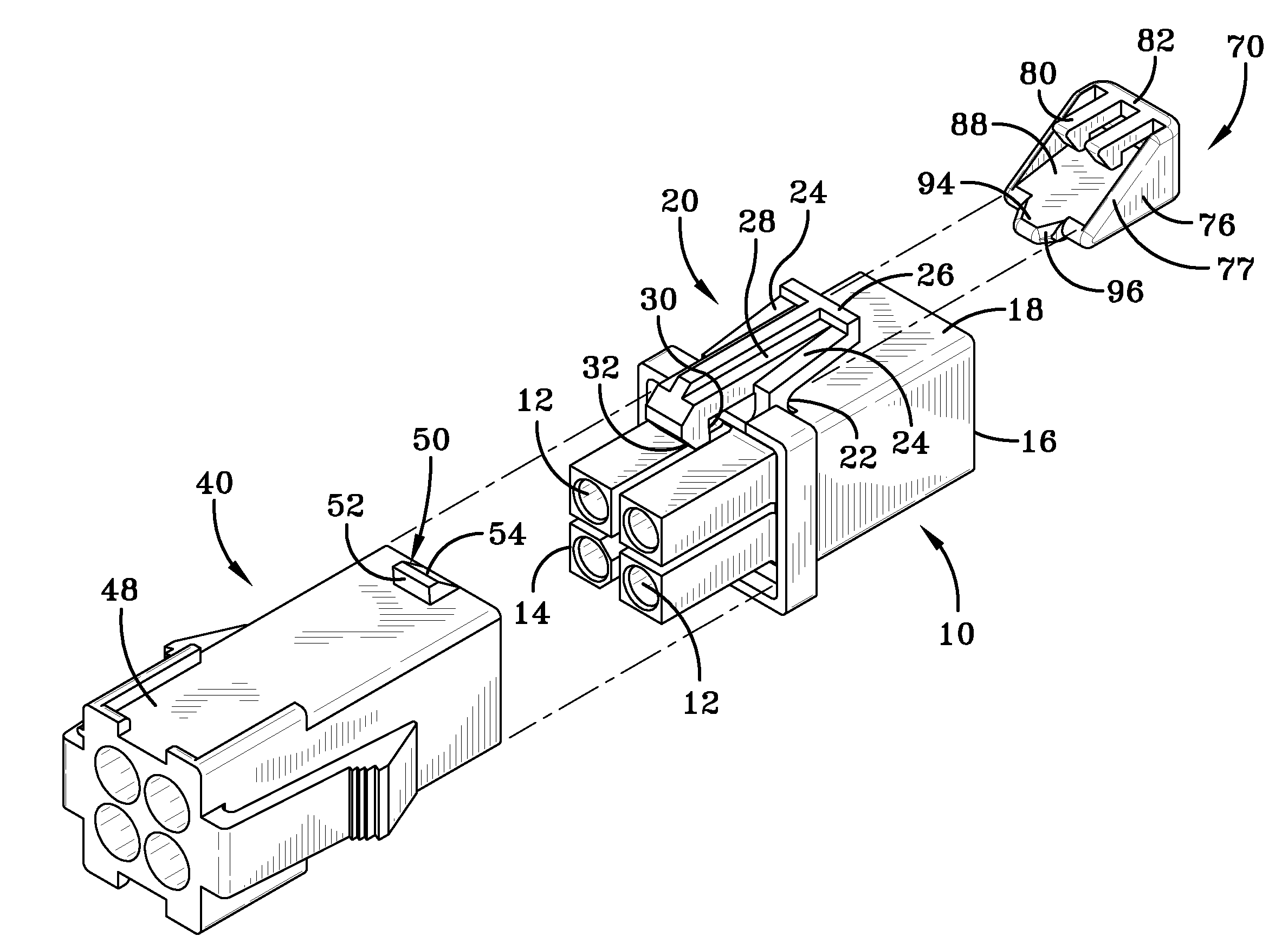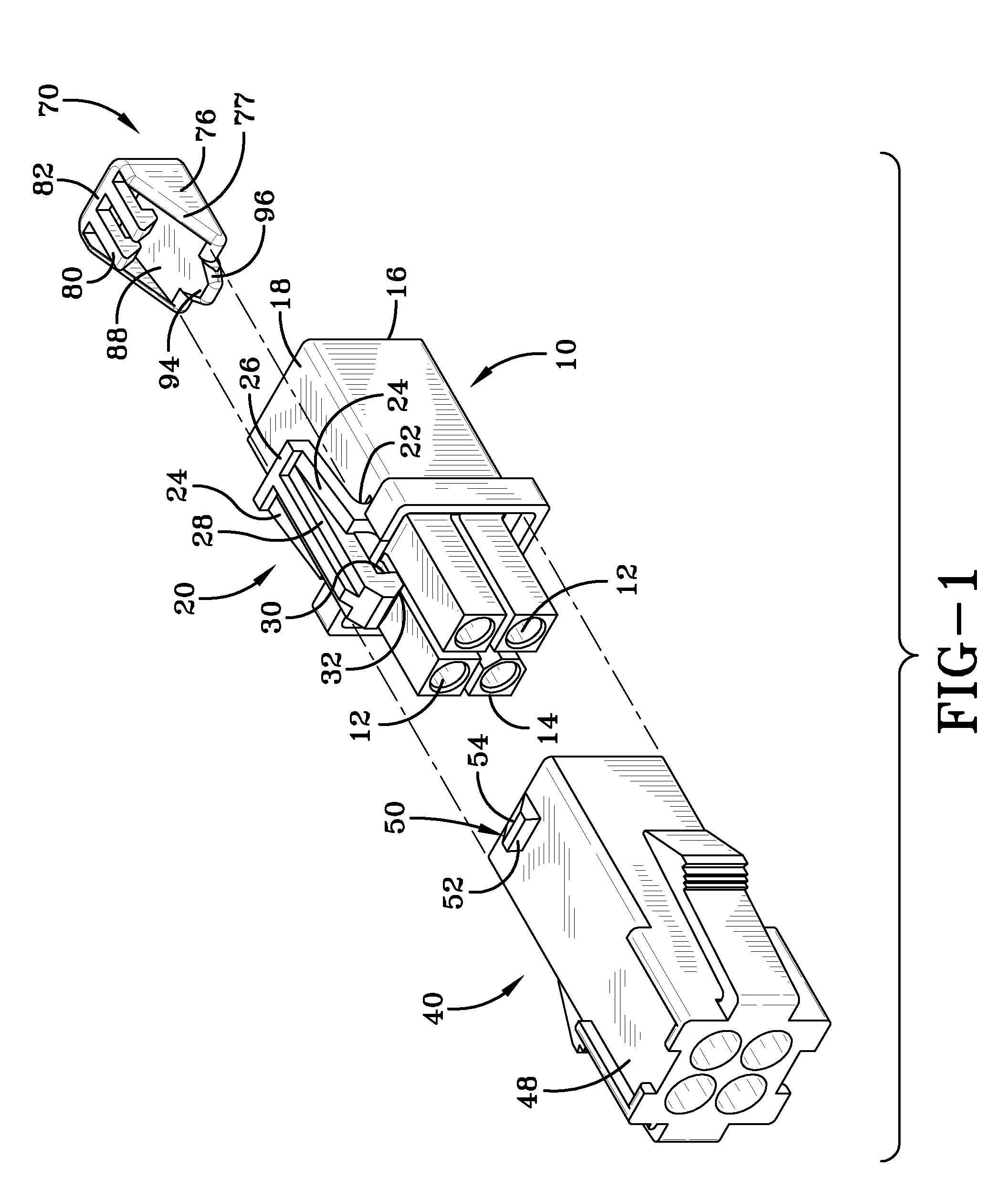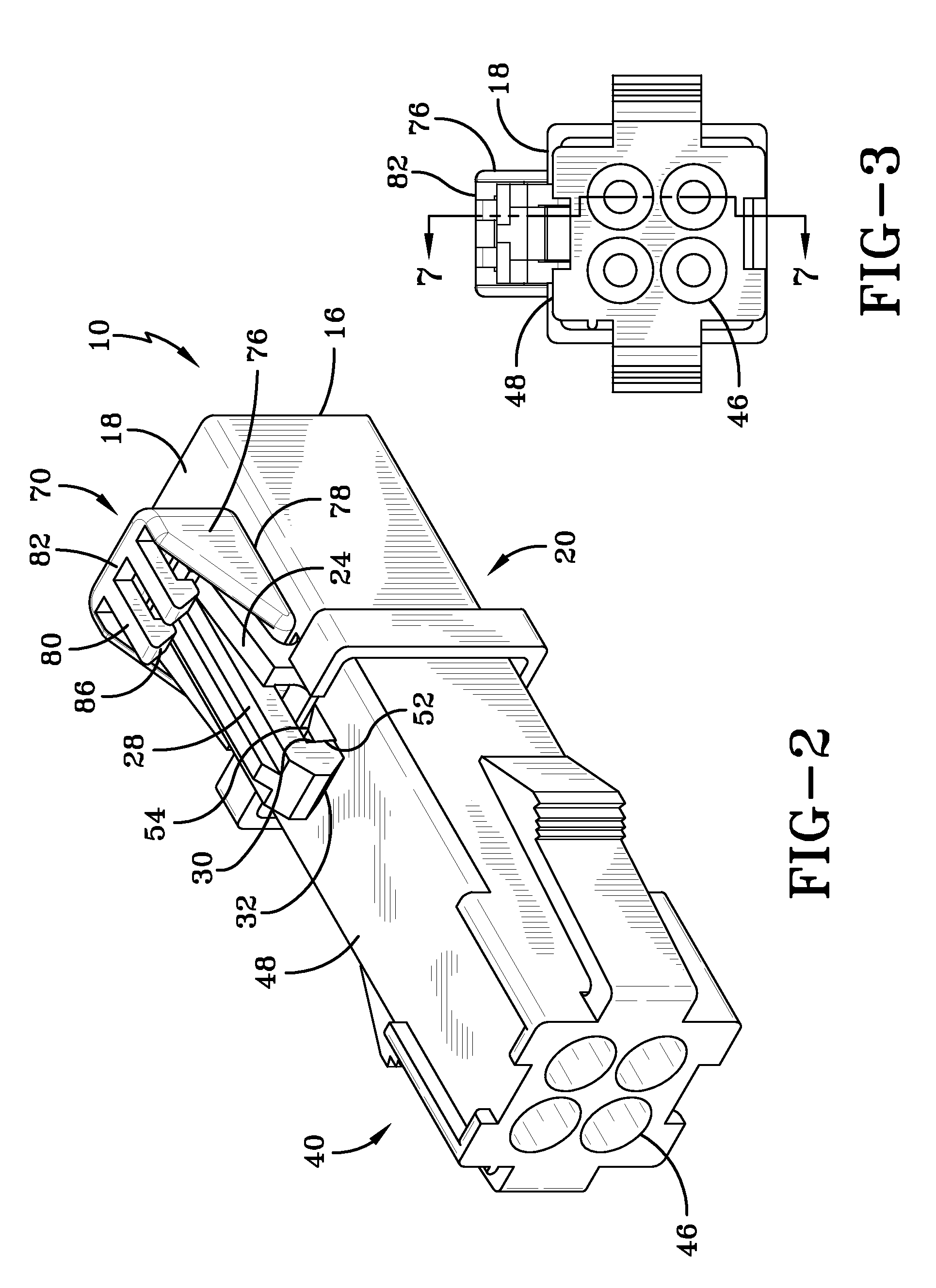Latch securing member
a technology of latching member and latching plate, which is applied in the direction of coupling device connection, coupling/disconnecting parts engagement/disengagement, electrical apparatus, etc., can solve the problems of difficult removal of latching member, difficult unmating of connector housing, and difficult insertion in close working areas, etc., to facilitate the effective use of the present invention in the marketplace.
- Summary
- Abstract
- Description
- Claims
- Application Information
AI Technical Summary
Benefits of technology
Problems solved by technology
Method used
Image
Examples
Embodiment Construction
[0020]With reference to FIGS. 1, 2, 3, 7, 8 and 9 a connector assembly has a male connector housing 10, a female connector housing 40 and a latch securing member 70. The male connector housing 10 is a dielectric body which has a plurality of terminal receiving cavities 12 extending therethrough from a front face 14 to a rear face 16. Each of the cavities 12 is shown to have a cylindrical cross-section as it enters the rear face, although other cross-sectional shapes are encompassed within the scope of the invention. Pin type terminals (not shown) are insertable into the cavities 12. Extending from a side wall 18 is a latch member 20. In the configuration shown, the latch member 20 has two pivot members 22 which are attached to the sidewall 18. Two extension arms 24 extend from the pivot members 22 to a disengagement section 26. A latch arm 28 extends from the disengagement section 26 beyond pivot members 22 toward the front face 14 of the housing 10. A latching shoulder 30 and an in...
PUM
 Login to View More
Login to View More Abstract
Description
Claims
Application Information
 Login to View More
Login to View More - R&D
- Intellectual Property
- Life Sciences
- Materials
- Tech Scout
- Unparalleled Data Quality
- Higher Quality Content
- 60% Fewer Hallucinations
Browse by: Latest US Patents, China's latest patents, Technical Efficacy Thesaurus, Application Domain, Technology Topic, Popular Technical Reports.
© 2025 PatSnap. All rights reserved.Legal|Privacy policy|Modern Slavery Act Transparency Statement|Sitemap|About US| Contact US: help@patsnap.com



